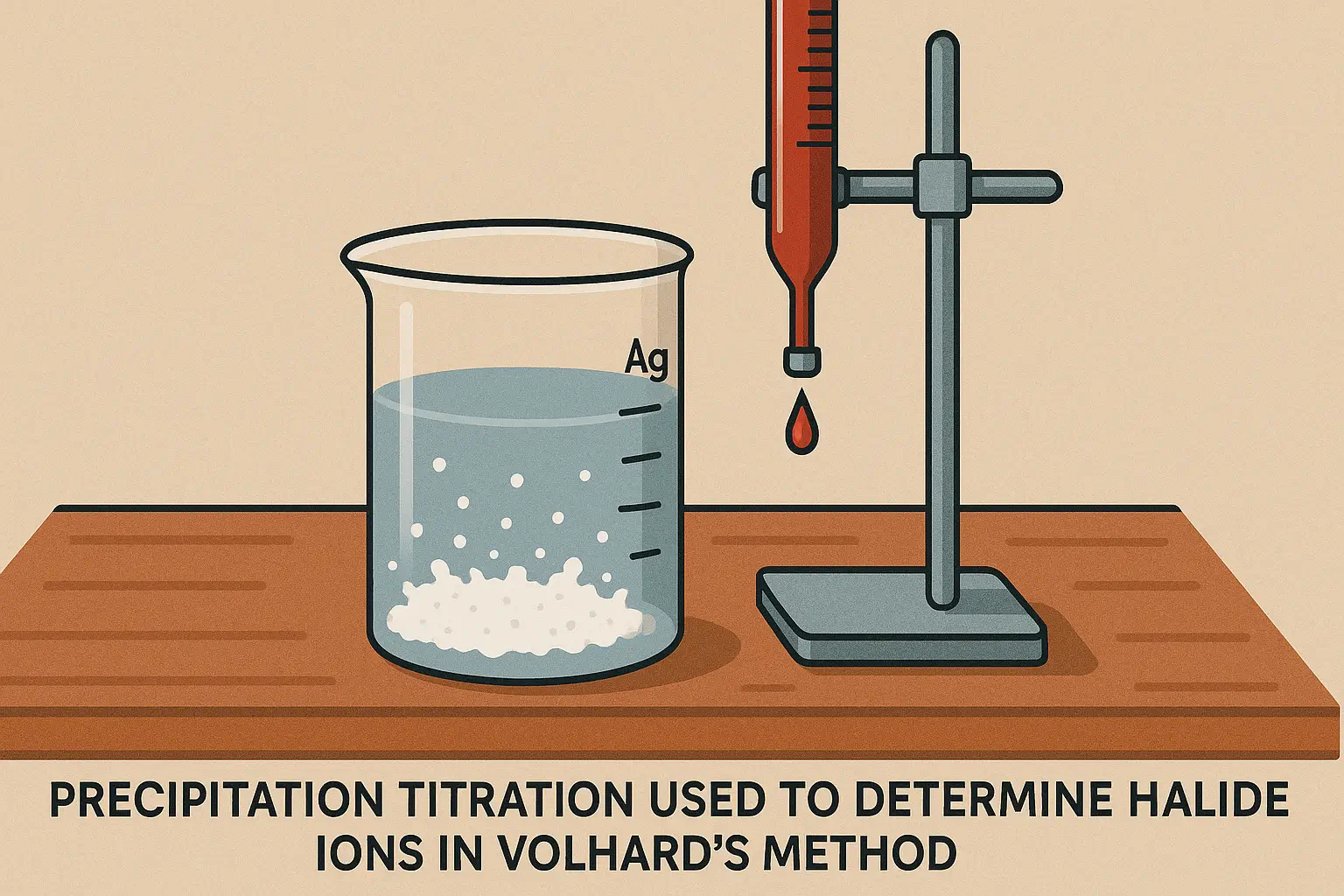Introduction to Volhard’s method:
- Volhard’s method is an indirect precipitation titration used to determine halide ions (Cl⁻, Br⁻, I⁻) and thiocyanate (SCN⁻) in solution.
- It involves two steps: adding an excess of silver nitrate to precipitate the halide, followed by a back-titration of unreacted silver ions with a standardized thiocyanate solution.
- The endpoint is indicated by a red-brown ferric thiocyanate complex, using ferric ammonium sulfate as the indicator.
Principle of Volhard’s method:
- Halide ions react with silver nitrate to form a precipitate:
- The excess Ag⁺ is titrated with thiocyanate (SCN⁻), forming silver thiocyanate:
- The endpoint occurs when the first excess SCN⁻ forms a red-brown complex with ferric ions:
Procedure:
- Pipette a known volume of the halide-containing solution into a flask.
- Add an excess of standardized AgNO₃ to precipitate all halide ions.
- Add nitric acid (HNO₃) to maintain an acidic environment and prevent silver hydroxide formation.
- Add ferric ammonium sulfate as the indicator (solution turns pale yellow).
- Titrate with standardized thiocyanate (NH₄SCN) until the first permanent red-brown color appears, indicating the endpoint.
Theory:
- Volhard’s method relies on the selective precipitation of silver halides and the clear color change when the ferric thiocyanate complex forms.
- The concentration of halide ions is calculated using:
Where:
-
$C_{X^-} = \frac{(C_{\mathrm{AgNO_3}} \times V_{\mathrm{AgNO_3}}) – (C_{\mathrm{SCN^-}} \times V_{\mathrm{SCN^-}})}{V_{\text{sample}}}$
- CX− = concentration of halide ions,
- CAgNO3 = concentration of AgNO₃,
- VAgNO3 = volume of AgNO₃ added,
- CSCN− = concentration of SCN⁻ titrant,
- VSCN− = volume of SCN⁻ used,
- V_sample = volume of the halide-containing sample.
This streamlined version maintains the key concepts while reducing redundancy.

